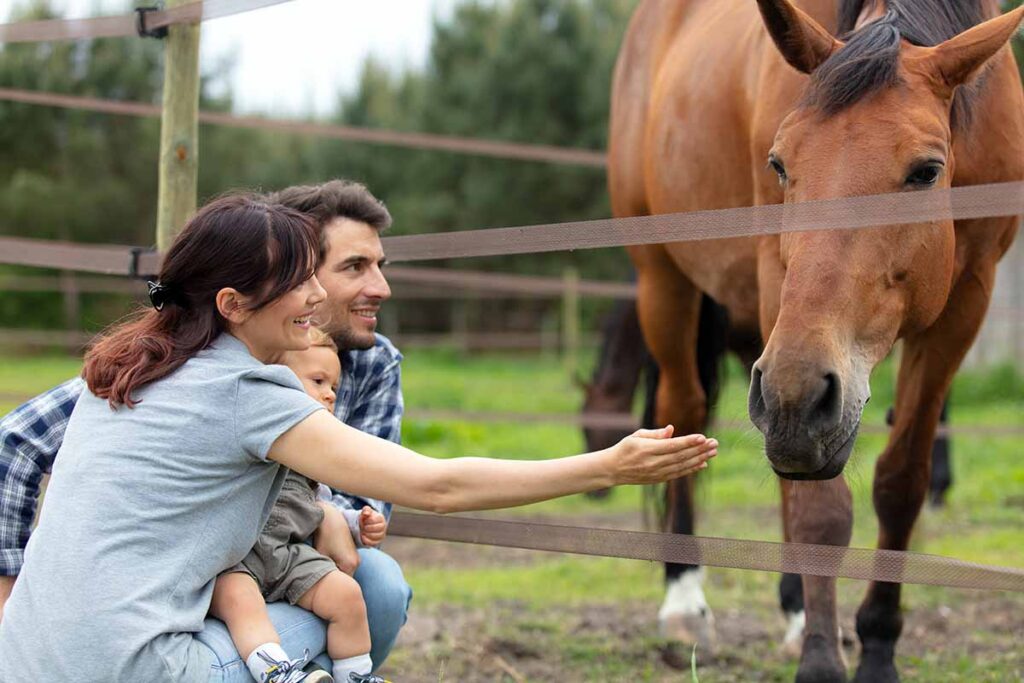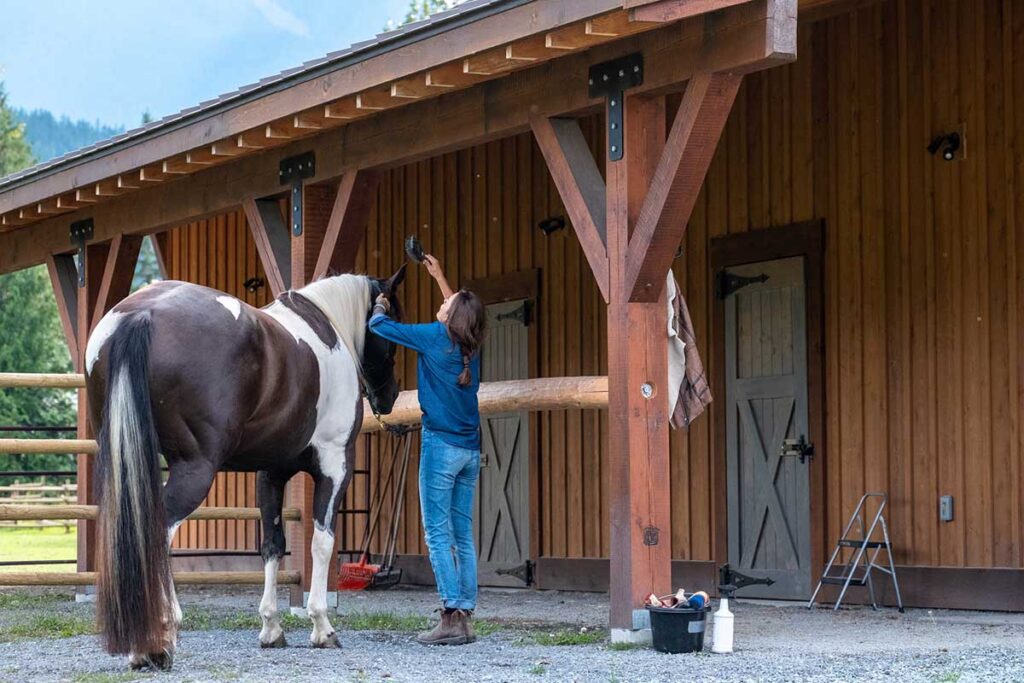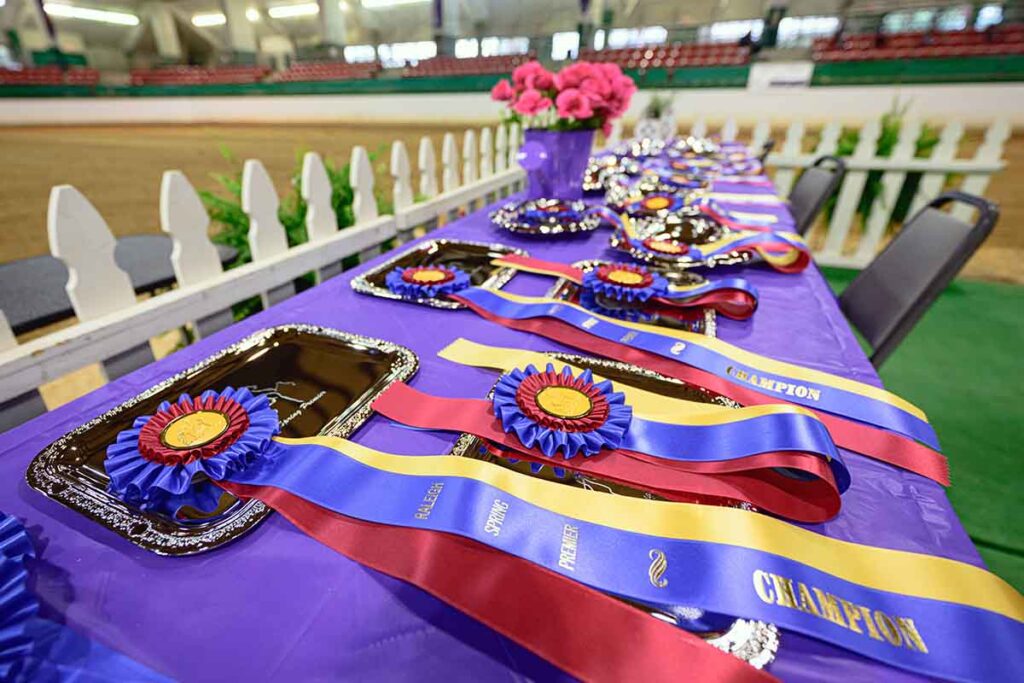Horse tack ranging from bridles and bits to martingales and breastplates are the fittings that bridge the connection between horse and rider. Some are specific to certain disciplines and experience levels, while others are essential for any horse and rider’s comfort and safety. Here’s a list of the most common types of horse tack and equipment, so you can understand their uses and whether you need them.
Saddles and Their Accessories
Saddles come in two main forms: English and Western. English saddles are designed to accommodate riders participating in English disciplines such as dressage, hunter/jumper, eventing, foxhunting, saddle seat, and polo, as well as trail and pleasure riding. While English saddles will vary by purpose (a dressage saddle has a deep seat and long leg position, for example, whereas an endurance trail riding saddle will be lightweight and cushioned for horse and rider comfort), they all have padded panels beneath the seat for close contact against the horse and lack a horn.
Western saddles are considerably heavier and larger than English saddles but spread the rider’s weight over a larger area of the horse’s back. They’re designed to accommodate riders participating in Western disciplines such as trail riding, roping, reining, barrel racing, and ranch riding. As such, they all vary slightly by activity. They’re characterized by a high horn and cantle (the upright portion at the back of the seat).
You’ll need a girth for an English saddle or a cinch for a Western saddle. This leather, synthetic, or mohair strap passes beneath the horse’s barrel, just behind his elbows, and attaches at both ends to the saddle to hold it in place.
You’ll also need saddle pads. Pads come in many shapes and sizes (square, shaped, contour, woven, etc.) to accommodate different saddles and disciplines. Their basic function is to help keep sweat and dirt off the underside of the saddle, but they’re also designed for comfort. Certain saddle pads prevent pressure points from developing and wick moisture and heat away from the horse’s back.
Many equestrians also choose to ride with a breastplate or collar. This piece of tack attaches to the underside of the girth and to both sides of the saddle to keep it from sliding back.
Headgear
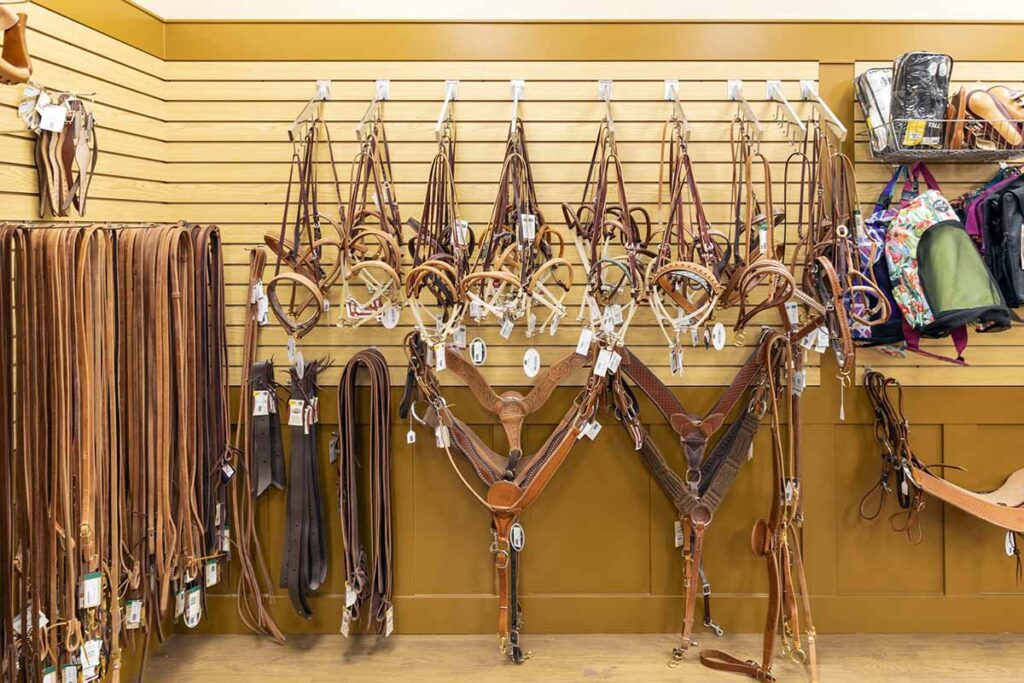
Pieces of equipment your horse wears on his head include:
- Halter and lead rope: The halter, not to be confused with a bridle, is a piece of nylon, rope, or leather headgear that fits around the horse’s muzzle and behind his ears. By attaching a nylon, cloth, or leather lead rope to the halter, right below the horse’s jaw, owners can lead, tie, and handle horses safely and effectively.
- Bridle: English-style bridles almost always have a noseband and a browband, whereas many Western bridles don’t. Regardless, the rider controls the horse using a set of leather, rope, rubber, or synthetic reins attached to the bit in the horse’s mouth.
- Bits: This metal or synthetic mouthpiece hangs from the bridle’s cheekpieces, passes through the horse’s mouth, and connects to the reins so the rider can better control the horse.
- Hackamore: A bitless bridle that controls the horse using the noseband.
- Martingale or tie-down: Both these pieces of tack serve similar head mechanic functions: To prevent horses from throwing their heads up so high as to be dangerous. Martingales attach at the girth and run up between the horse’s front legs to attach at the noseband (a standing martingale) or the reins (a running martingale). They’re most commonly used by English discipline riders. Western riders use a similar piece of equipment called a tie-down, which also runs from the girth to the noseband.
Leg Protection
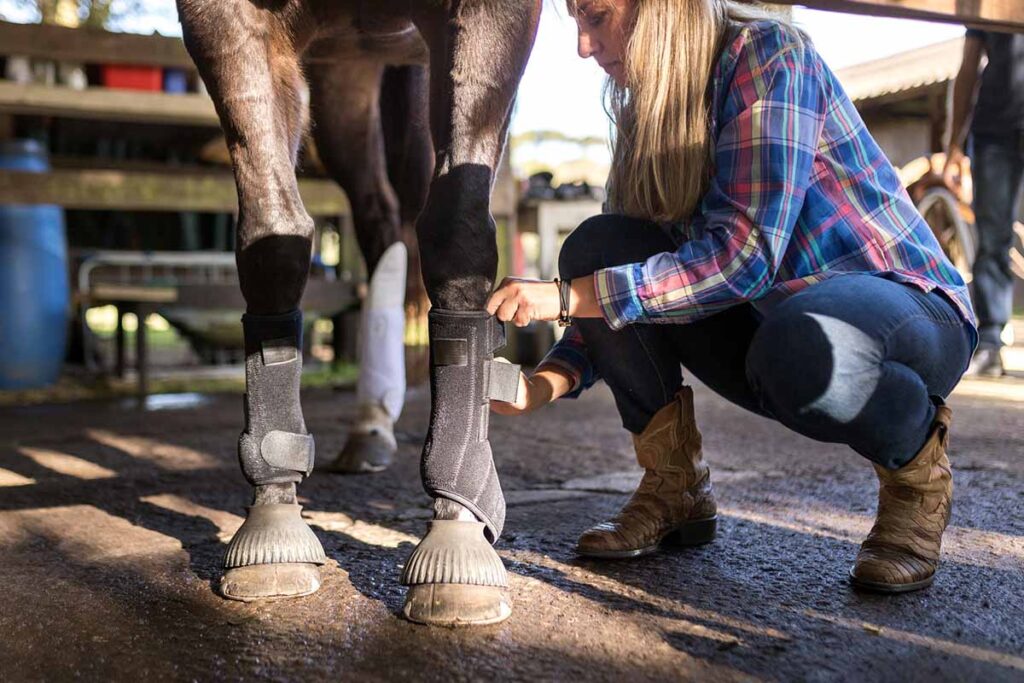
Various types of boots and wraps help protect horses’ limbs from injury:
- Polo wraps: Riders often apply these fleece (or other material) bandages to their horses’ lower legs during exercise to protect the tendons and ligaments from bruises and lacerations if the horse hits himself with his own hooves or makes contact with a hard object.
- Brushing or splint boots: These boots serve the same purpose as polo wraps—to protect the lower limbs from injury during exercise. They’re typically faster and easier to put on and take off, however, as they fasten with Velcro or clasps.
- Bell boots: Horse owners might place these protective boots on horses’ front hooves during turnout or exercise. They’re designed to prevent horses from injuring themselves or pulling off their front shoes if they overreach with the hind feet midstride.
- Shipping wraps: Similar to polos but more substantial, shipping boots or bandages (also called standing wraps) protect a horse’s legs during transport in a trailer.
Other Types of Horse Tack
Here are a few more pieces of equipment you might want to use with your horse:
- Crupper: This piece of leather attaches to the back of the saddle or harness and runs under the horse’s tail. It prevents the saddle from shifting forward and is useful for horses with low withers.
- Longe line: This woven nylon or cotton line is typically 30 feet (10 meters) long. You can attach it to a halter or bridle to encourage horses to work unridden on a circle.
- Crop: Riders might use this short, flexible whip to encourage horses to go forward, stay straight, and back up their leg and seat aids.
- Spurs: Riders might wear this metal tool around the heel of their boots to signal horses to move forward or laterally.
- Curb chain or strap: Certain types of bits have a thin piece of leather or chain that runs under the horse’s chin. It applies pressure for added control when you pull on the reins.
Take-Home Message
Each of these items plays a unique role in horse riding and training. You might just need the basics: a properly fitted saddle, pad, bridle, and girth. Or, you might find you need a tie-down to prevent your horse from throwing his head up or spurs to encourage him to respond to your aids. An experienced horse person or trainer can help you choose the right tools for your needs and show you how to apply them correctly.
Are you enjoying this content? Sign up for My New Horse’s FREE newsletter to get the latest horse owner info and fun facts delivered straight to your inbox!


